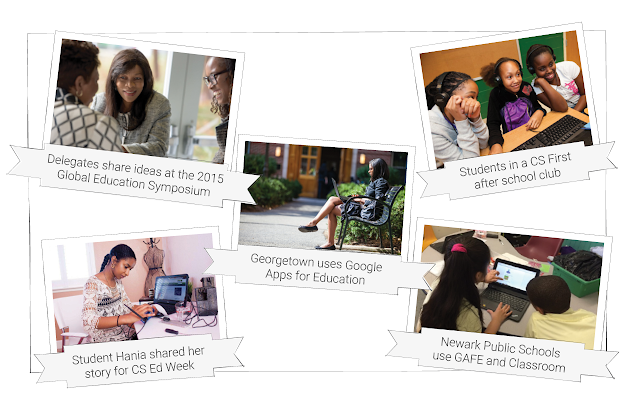Editor's note: Georgia schools are seeing great success with Google for Education. We talked to educators and administrators in Georgia to reflect on how technology has helped them innovate and create more efficient processes. From creating more efficient ways for parents to pick their children up from school, to enabling more efficient coaching on the baseball field, technology has improved the student, teacher and parent experience across the state. To learn more about Google solutions for education, join us for a Hangout on Air focused on the next phase of content in the classroom on February 23rd at 2pm ET / 11am PT.
Many schools are replacing former processes with more efficient ways to personalize learning and provide students with the skills to be successful. That level of innovation requires teachers and staff to think about how they can use technology in new ways. Schools in Georgia are using Google Apps for Education to drive innovation in small areas that ultimately inspire new ways of thinking across the district. We’d like to shed light on how schools have transformed their old processes using technology.
Transforming lectures into project-based learning
Old: For many students, elementary and high school involves listening to a teacher lecture, reading a textbook and taking tests. This common approach to learning leaves out the interactive elements that often help students learn best.
New: The Center for Design and Technology, a project-based STEM program at Lanier High School in Gwinnett County, gives students real-life experiences to apply the skills they’ve learned. Every student works on six team projects per year, and every team creates a website using Google Sites, with links to Google Docs, Sheet and Slides used for team planning and collaboration. “Google Apps helps students learn communication skills, collaborate with teammates and think creatively,” says Mike Reilly, technology teacher at Lanier High School.
The program has helped teachers and students learn outside of the classroom and expand the skills they’re most interested in developing. For example, a team of four students worked with video editor Walter Biscardi to create a 3D model of a disease spread by flies, which appeared in the PBS movie “Dark Forest Black Fly.” They shared ideas in virtual brainstorming sessions via Google Hangouts and collaborated in real time using Google Docs.
Bringing instant communication to an ineffective system
Old: Picking up students from school is often a slow, disorganized process since schools often have thousands of students to manage and communication isn’t always the smoothest between all staff involved.
New: At Forsyth County Schools (case study), teachers and staff are using Google Apps beyond the classroom to help make the after-school pick-up queue more efficient. In the past, parking lot attendants who escort students to their cars and cafeteria attendants who supervise students didn’t have clear lines of communication. The principal turned to Google Sheets as the solution to increase communication.
All students are assigned a number in a shared spreadsheet. When a parent picks up her child, she displays the student’s number on the windshield, and the parking attendant uses a tablet to flag on the screen in the cafeteria that it’s time for the student to go to the pick-up area. Introducing new technology improved real-time communication and inspired teachers districtwide to talk about innovative ways to use Google Apps to improve processes.
Creating a more streamlined, collaborative process both in the classroom and out on the field
Old: Monitoring and recording sports team performance can be a time-consuming and tedious process when it’s done the old-fashioned way with a notebook and pencil.
New: With Google for Education tools, coaches at Jeff Davis County Schools (case study) can record and keep track of the high school baseball team’s pitch speeds and number of pitches to make sure a pitcher isn’t throwing too many pitches. A member of the tech staff reads the pitch speed from a radar gun and enters the number into a Google Sheet using a Chromebook. Another Chromebook is connected to a TV in the dugout, so the coaches can monitor the speed and number of pitches thrown. With the sharing feature, the tech staff and coaches are able to view the same information that’s being edited in real time.
Coaches now have more information to make more informed decisions about their players. “If a pitcher has thrown too many pitches or hit pitch speed begins to decrease, the coach can determine if the pitcher needs to be taken out of the game and a relief is sent in,” says Keith Osburn, technology and special programs director at Jeff Davis County Schools.
 |
| Coach at Jeff Davis keeping track of pitch speeds on a Chromebook |
Schools are continuing to reinvent old processes to provide students with a 21st century education. Check out more inspirational stories from schools.
We’ve heard great stories from many of you about how you’re using technology to do amazing things in your schools, so we're going across the U.S. to see for ourselves! Check out the map below to see where we’ll head next. We’d love to hear what’s happening in your state, so please share your story on Twitter or Google+ and tag us (@GoogleEdu) or include the #GoogleEdu hashtag.











